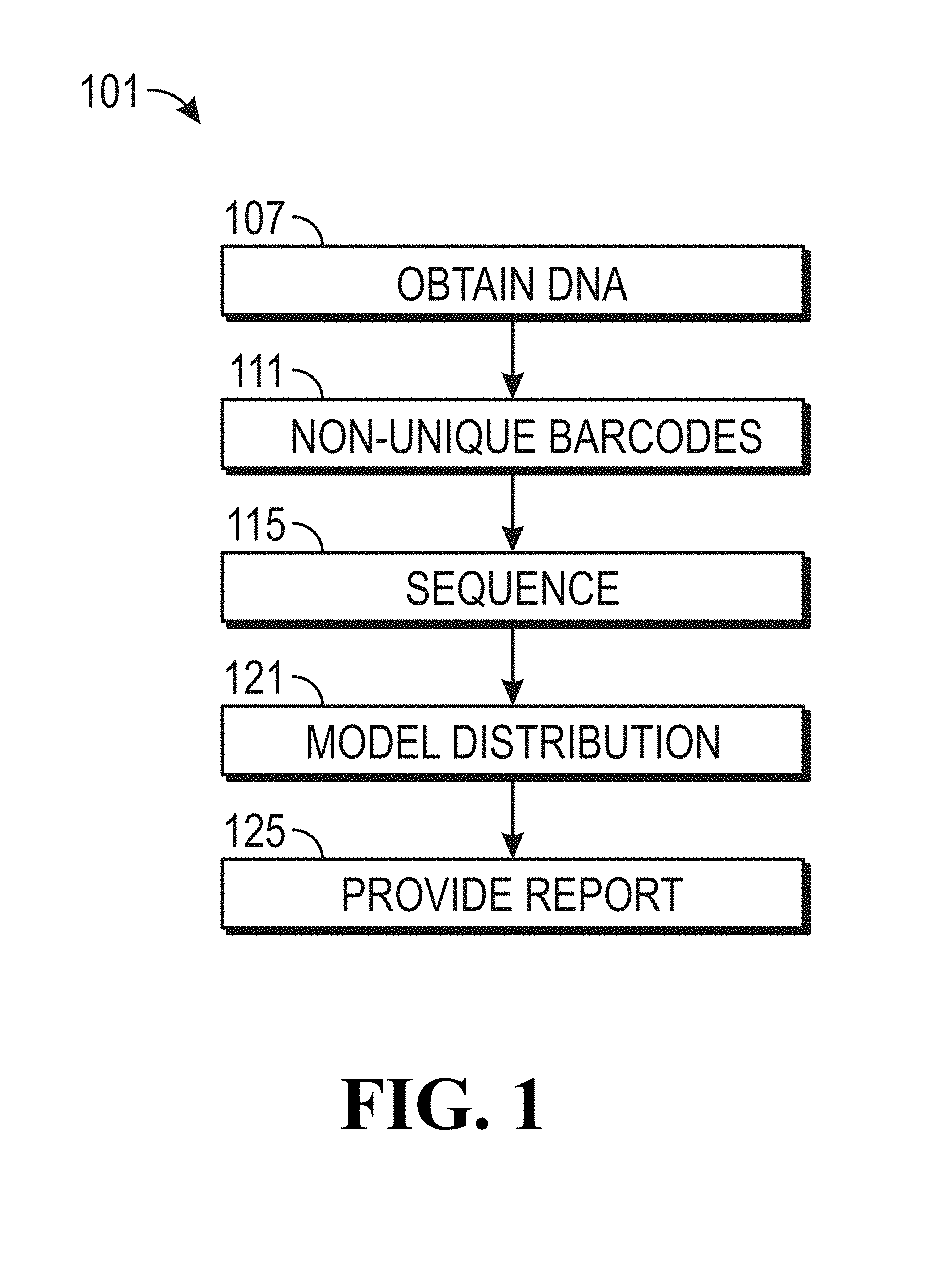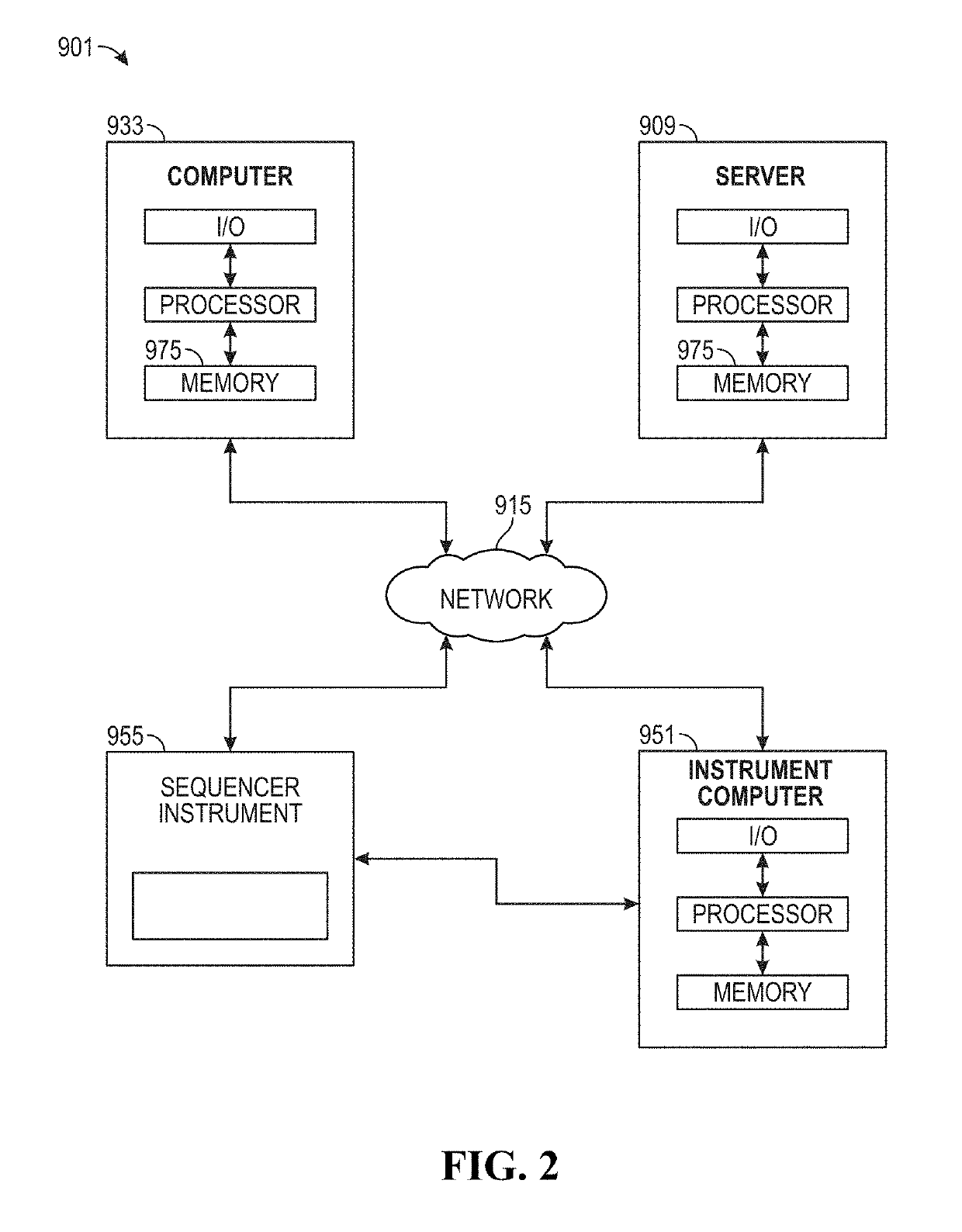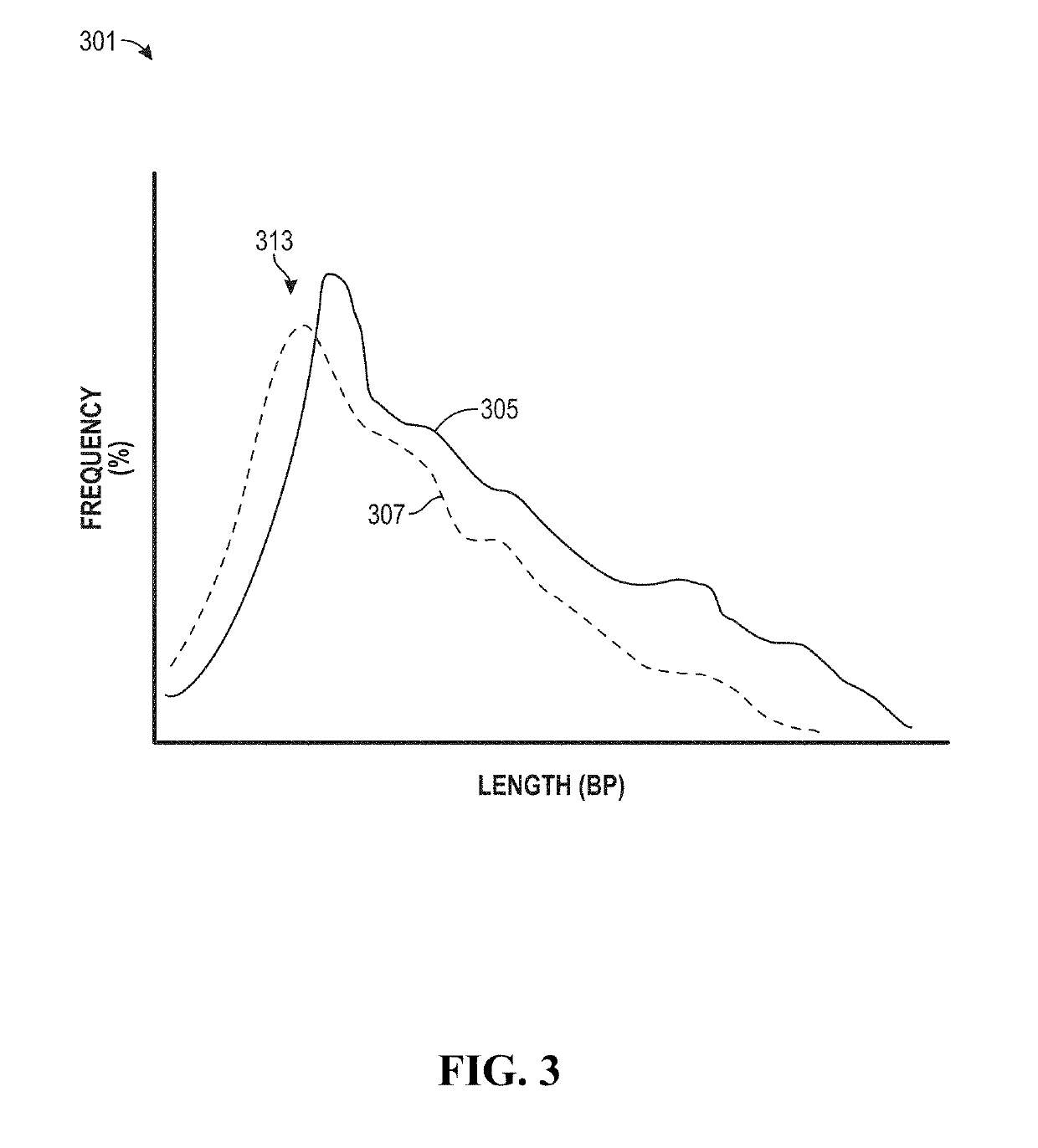Process for microsatellite instability detection
- Summary
- Abstract
- Description
- Claims
- Application Information
AI Technical Summary
Benefits of technology
Problems solved by technology
Method used
Image
Examples
example 1
Methods
[0056]Patients and Sample Collection
[0057]Formalin fixed paraffin embedded (FFPE) tumor and matched normal buffy coat specimens (n=61) from individuals with cancer were obtained after surgical resection through commercial biorepositories from BioIVT (Hicksville, N.Y., USA), Indivumed (Hamburg, Germany), and iSpecimen (Lexington, Mass., USA). Plasma samples from healthy individuals (n=163) were procured through BioIVT (Hicksville, N.Y., USA) during routine screening with negative results and no prior history of cancer. Human cells from previously characterized MSI cell lines were obtained from ATCC (Manassas, Va., USA) (n=5; LS180, LS411N, SNU-C2B, RKO, and SNU-C2A). Finally, baseline and serial plasma samples from cancer patients with progressive metastatic carcinoma (n=16; 11 colorectal, 3 ampullary, and 2 small intestine) were obtained while patients were enrolled in a phase 2 clinical trial to evaluate immune checkpoint blockade with pembrolizumab(1,2). Radiographic and se...
example 2
Microsatellite Instability Analyses by Next-Generation Sequencing
[0065]Sequence data were aligned to the human reference genome assembly (hg19) using BWA-MEM(37). Reads mapping to microsatellites were excised using Samtools(38) and analyzed for insertion and deletion events (indels). In most cases, alignment and variant calling did not generate accurate indel calls in repeated regions due to low quality bases surrounding the microsatellites. Therefore, a secondary local realignment and indel quantitation was performed. Reads were considered for an expanded indel analysis if (i) the mononucleotide repeat was contained to more than eight bases inside of the start and end of the read, (ii) the indel length was ≤12 bases from the reference length, (iii) there were no single base changes found within the repeat region, (iv) the read had a mapping score of 60, and (v) ≤20 bases of the read were soft clipped for alignment. After read specific mononucleotide length analysis, error correctio...
example 3
Tumor Mutational Burden Analyses by Next-Generation Sequencing
[0066]Next generation sequencing data were processed and variants were identified using the VariantDx custom software as previously described(34). A final set of candidate somatic mutations were selected for tumor mutational burden analyses based on: (i) variants enriched due to sequencing or alignment error were removed (≤5 observations or <0.30% mutant allele fraction), (ii) nonsynonymous and synonymous variants were included, but variants arising in non-coding regions were removed, (iii) hotspot variants annotated in COSMIC (version 72) were not included to reduce bias toward driver alterations, (iv) common germline SNPs found in dbSNP (version 138) were removed as well as variants deemed private germline variants based on the variant allele frequency, and (v) variants associated with clonal hematopoietic expansion were not included in the candidate variant set(39).
[0067]In Silico TCGA Analyses
[0068]In order to evaluat...
PUM
| Property | Measurement | Unit |
|---|---|---|
| Fraction | aaaaa | aaaaa |
| Fraction | aaaaa | aaaaa |
| Fraction | aaaaa | aaaaa |
Abstract
Description
Claims
Application Information
 Login to View More
Login to View More - R&D
- Intellectual Property
- Life Sciences
- Materials
- Tech Scout
- Unparalleled Data Quality
- Higher Quality Content
- 60% Fewer Hallucinations
Browse by: Latest US Patents, China's latest patents, Technical Efficacy Thesaurus, Application Domain, Technology Topic, Popular Technical Reports.
© 2025 PatSnap. All rights reserved.Legal|Privacy policy|Modern Slavery Act Transparency Statement|Sitemap|About US| Contact US: help@patsnap.com



